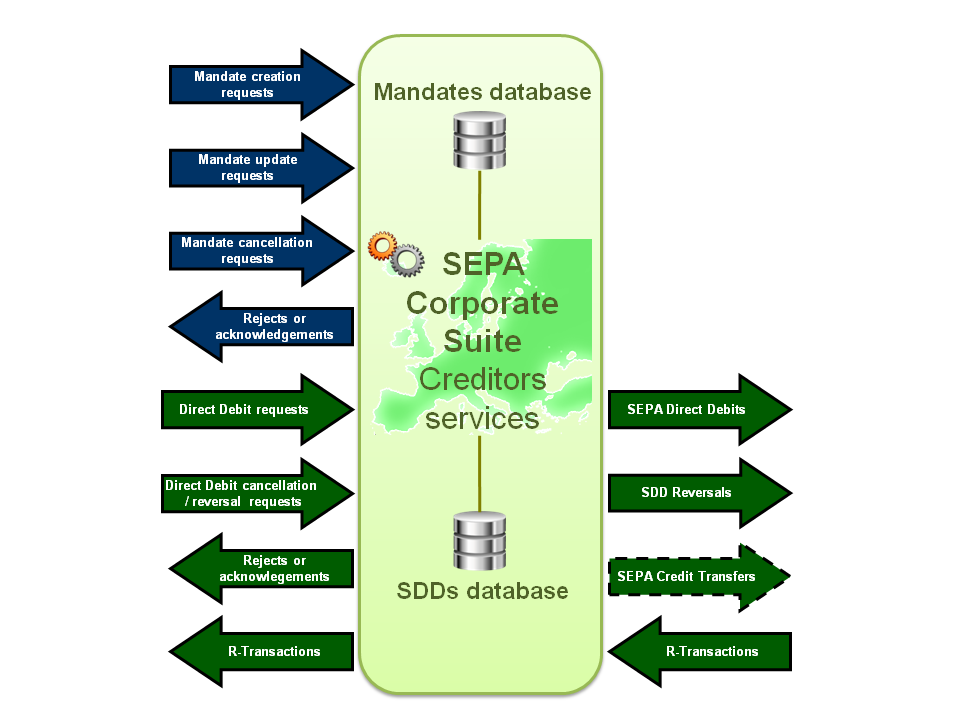The diagram below presents, from a business perspective, the types of exchanges between the SEPA Payment Suite application and creditors on one hand, and the creditors’ banks on the other hand, irrespective of the positioning of the platform in the client’s IS (product positioning):

Picture 4: Diagram of creditor flows
These exchanges may be divided into two groups:
-
Flows associated with mandate management: These are requests to create, modify or revoke mandates that are issued by the creditor; SEPA Payment Suite may accept or reject these requests;
-
Flows associated with management of SDD flows: The creditor issues requests for direct debits which SEPA Payment Suite checks and converts into compatible SDD files. SEPA Payment Suite either transmits these files directly to the creditor’s bank, or returns them to the creditor. The creditor can cancel direct debits that it has issued. In response to a direct debit request, the creditor may receive a refusal which can originate from SEPA Payment Suite or the creditor’s bank. It may also receive R-transactions on direct debits that have been paid. Alternatively, the creditor may ask its bank to reverse the funds that it has debited; outside the legal time-limit imposed by the EPC, this request may be implemented by means of a SEPA Credit Transfer (SCT).